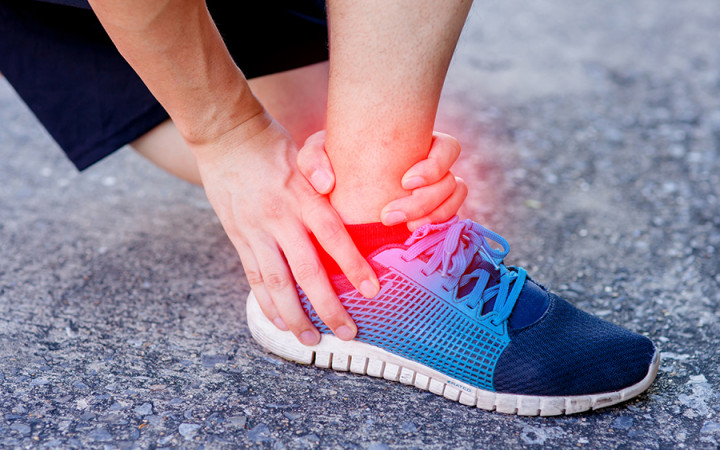Today’s Wonder of the Day was inspired by Sophie. Sophie Wonders, “What is a sprained ankle?” Thanks for WONDERing with us, Sophie!
The game is tied. It seems like you've been up and down the soccer pitch hundreds of times over the past half-hour. You're tired, but your dig deep to make one more attack on the goal.
Your best friend slides a pass through two defenders. Suddenly, the ball arrives at your feet. You dribble to the right and then to the left. A defender sticks out a foot to steal the ball.
Your foot comes down and, instead of touching the ball, it catches the side of the defender's foot. Your ankle twists in an unnatural way and you fall to the ground. The whistle sounds. The game is over. But all you can think about is the pain radiating from your ankle.
As a teammate helps you limp to the sideline, you worry that you might have broken a bone. After a trip to the doctor, however, you receive good news: it's just an ankle sprain and you'll be back on the pitch in a couple weeks.
Unlike strains, which happen when you stretch a muscle too far, a sprain occurs when you overstretch or tear a ligament. Ligaments are the strong, stretchy bands of tissue that hold bones together in your joints.
Sprains are painful, and they can happen anywhere in your body where there are ligaments. Although sprains are common injuries for athletes, they can happen to anyone who happens to trip or fall.
In addition to pain, sprains often cause swelling and bruising. Movement of a sprained body part can be severely limited after an injury. Exact symptoms will vary by the type of sprain: mild overstretching (Grade 1), partial tearing (Grade 2), and complete tearing with significant pain and swelling (Grade 3).
If a doctor diagnoses a sprain, you'll likely need to take pain medication while supporting the injured area with a brace, splint, or temporary cast. When you get home, you'll need to follow the RICE formula for ongoing treatment.
No, that doesn't mean you'll need to eat rice at every meal. RICE stands for rest, ice, compression, and elevation. Rest your injury. Apply ice packs for short periods of time to reduce swelling. Applying compression by wearing an elastic bandage or splint and elevating the injured body part higher than your heart can also help reduce swelling.
Bad sprains can take 3-4 weeks or more to heal properly. Be sure to follow your doctor's orders carefully and don't try to resume activities too quickly. When your sprain is healed, you'll want to do stretching and strengthening exercises to improve strength and flexibility.




